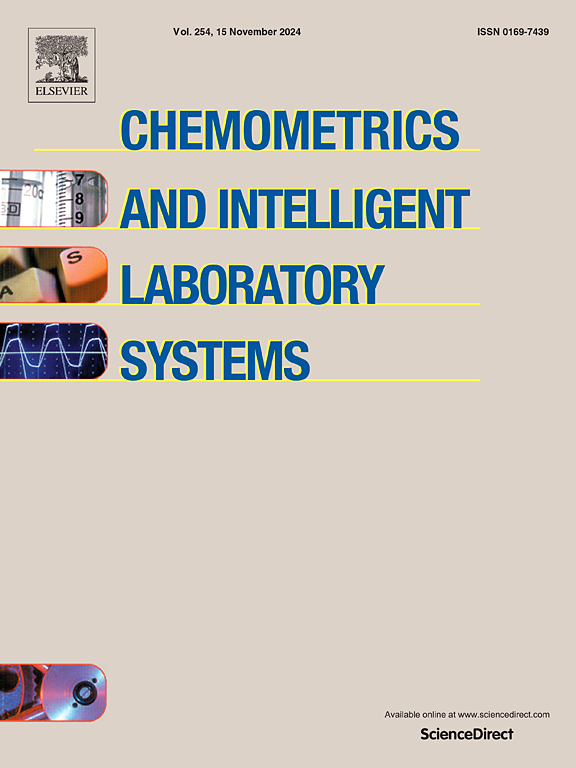Multiplatform spectralprint strategies for the authentication of Spanish PDO fortified wines using AHIMBU, an automatic hierarchical classification tool
IF 3.7
2区 化学
Q2 AUTOMATION & CONTROL SYSTEMS
Chemometrics and Intelligent Laboratory Systems
Pub Date : 2024-12-20
DOI:10.1016/j.chemolab.2024.105311
引用次数: 0
Abstract
Spanish fortified wines with Protected Designation of Origin (PDO) are esteemed for their deep-rooted tradition, historical significance, and exceptional viticultural quality. Spain boasts four PDOs: ‘Condado de Huelva’, ‘Jerez-Xérès-Sherry’, ‘Sanlúcar de Barrameda’, and ‘Montilla-Moriles', which produce different types of wines—Fino and Manzanilla undergo biological aging, Olorosos experience oxidative aging, and Amontillados benefit from mixed aging. Due to their long aging periods and significant production costs and hence, their high value, these wines are susceptible to fraud, emphasizing the necessity for robust authentication methods. In response to this need, this study explores emerging technologies, such as spectroscopic techniques coupled with different chemometric approaches, to offer rapid, straightforward, and cost-effective solutions to ensure the authenticity of PDO wines. A comprehensive set of PDO fortified wines, encompassing various types and origins, was analyzed by near and mid-infrared (NIR and MIR) and ultraviolet–visible (UV–Vis) spectroscopies. Preprocessed data were modelled individually, as well as after low-level data fusion, using partial least squares-discriminant analysis (PLS-DA) and a new available chemometric tool named Automatic Hierarchical Model Builder (AHIMBU). The results obtained showed that the hierarchical classification model generated by AHIMBU outperformed the single PLS-DA models, offering enhanced classification accuracy and efficiency (i.e., the correct classification rate increased by around 40 % from the single PLS-DA models to the AHIMBU models). Among the spectroscopic techniques applied, UV–Vis spectroscopy emerged as the most effective for authentication purposes.
使用AHIMBU(一种自动分级分类工具)对西班牙PDO强化葡萄酒进行多平台光谱打印认证策略
西班牙强化葡萄酒与保护原产地名称(PDO)是尊敬的,因为他们根深蒂固的传统,历史意义,和特殊的葡萄栽培质量。西班牙拥有四个pdo:“Condado de Huelva”、“jerez - x r - sherry”、“Sanlúcar de Barrameda”和“Montilla-Moriles”,它们生产不同类型的葡萄酒——菲诺和曼萨尼拉采用生物陈酿,Olorosos采用氧化陈酿,而阿蒙蒂拉多则采用混合陈酿。由于陈酿时间长,生产成本高,因此价值高,这些葡萄酒容易受到欺诈,强调了强有力的认证方法的必要性。为了满足这一需求,本研究探索了新兴技术,如光谱技术与不同的化学计量方法相结合,以提供快速、直接和经济有效的解决方案,以确保PDO葡萄酒的真实性。通过近红外和中红外光谱(NIR和MIR)和紫外可见光谱(UV-Vis)分析了一套全面的PDO强化葡萄酒,包括各种类型和产地。使用偏最小二乘判别分析(PLS-DA)和一种名为自动分层模型构建器(AHIMBU)的新型化学计量学工具,对预处理后的数据进行单独建模,并进行低级数据融合。结果表明,AHIMBU生成的分层分类模型优于单一PLS-DA模型,分类精度和分类效率均有所提高(与AHIMBU模型相比,单一PLS-DA模型的分类正确率提高了约40%)。在应用的光谱学技术中,紫外可见光谱学成为最有效的鉴定技术。
本文章由计算机程序翻译,如有差异,请以英文原文为准。
求助全文
约1分钟内获得全文
求助全文
来源期刊
CiteScore
7.50
自引率
7.70%
发文量
169
审稿时长
3.4 months
期刊介绍:
Chemometrics and Intelligent Laboratory Systems publishes original research papers, short communications, reviews, tutorials and Original Software Publications reporting on development of novel statistical, mathematical, or computer techniques in Chemistry and related disciplines.
Chemometrics is the chemical discipline that uses mathematical and statistical methods to design or select optimal procedures and experiments, and to provide maximum chemical information by analysing chemical data.
The journal deals with the following topics:
1) Development of new statistical, mathematical and chemometrical methods for Chemistry and related fields (Environmental Chemistry, Biochemistry, Toxicology, System Biology, -Omics, etc.)
2) Novel applications of chemometrics to all branches of Chemistry and related fields (typical domains of interest are: process data analysis, experimental design, data mining, signal processing, supervised modelling, decision making, robust statistics, mixture analysis, multivariate calibration etc.) Routine applications of established chemometrical techniques will not be considered.
3) Development of new software that provides novel tools or truly advances the use of chemometrical methods.
4) Well characterized data sets to test performance for the new methods and software.
The journal complies with International Committee of Medical Journal Editors'' Uniform requirements for manuscripts.

 求助内容:
求助内容: 应助结果提醒方式:
应助结果提醒方式:


